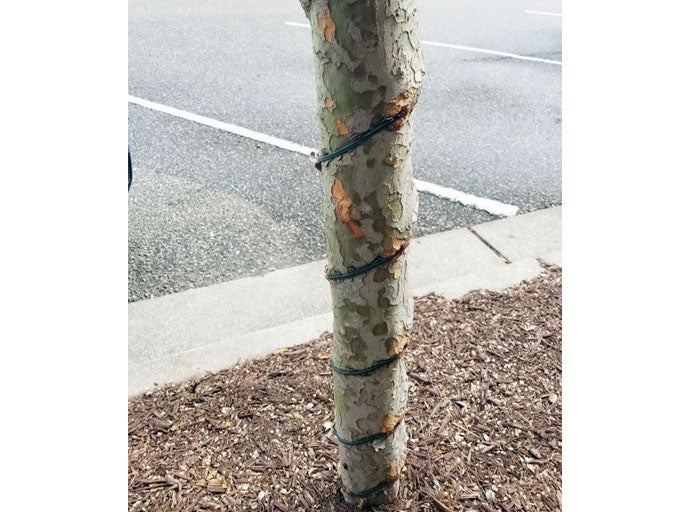Darrell Blackwelder column: Tree bark damage
Published 12:00 am Sunday, February 14, 2021

- Wires, lawn mowers and string trimmers can damage tree bark, which can open the door for fungi and parasites.
Bark damage, especially near the base of the tree, is the No. 1 killer of many trees. Repeated bumping of the trunks with lawn mowers and other types of equipment when mowing close to tree trunks spells a short-lived future for these plants.
String trimmers also damage the trees, although the damage is not as evident. This damage occurs to the cambium layer (food conducting tissues) and often shows no physical evidence to the outside appearance of the bark. However, internal tissue is bruised reducing food and water uptake. String trimmer rotation speeds are so fast that damage goes unnoticed.
Wires and ropes wrapped around trunks also damages young actively growing trees. Wire and synthetic roping materials become embedded in just a few months also causes serious damage to the tree’s vascular system. This type of damage only takes a few years to kill a tree.
External bark damage near the ground often goes unnoticed for years. Open wounds provide the perfect entry source for fungi and bacteria to silently invade the vascular system of the tree, initiating the tree’s gradual decline. Invading grass or mulch near the base of the tree often camouflages the wound masking detection for years. After a few years, growth of the tree begins to decline and the tree becomes weak and anemic. Weak and declining trees then become easy prey to secondary insects and other plant diseases expediting the eventual death. Take care when mowing and trimming around trees and shrubs. Remove wires as soon as possible to prevent possible tree damage.
Darrell Blackwelder is the retired horticulture agent and director with the North Carolina Cooperative Extension Service in Rowan County. Contact him at deblackw@ncsu.edu.



